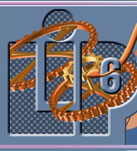|
The complexity of large distributed systems is a problem when designers
want to evaluate their properties. Systematic tests of the application
cannot be considered as verification because of the parallelism.
Researches in this area do outline the need for a modeling step. Modeling
produces a set of views about a system that are usefull for evaluation,
validation, verification and also code generation. These activities may
be grouped under the word «prototyping». Prototyping does
not designate only program generation techniques. It is now accepted as
an apporach to the implementation of systems involving modelling, validation
and verification as well as program generation.
Formalisms such as Colored Petri nets are now widely used for the formal
modeling of parallel systems. However, their main drawback is their
poor structuring facilities. They are thus difficult to use for large
scale systems. To compensate lack of structuration, two research strategies
are usually considered:
- The integration of new high level features, as hierarchy [Buchholz
94] enables modeling of more complex systems but raises theoretical
problems. Some properties can no longer be computed. Not all properties
extractable from non hierarchical nets can be computed either;
- The association between Petri nets and another high level representation
enbales the use of its structuring capabilities [Di
Giovanni 90, Sibertin-Blanc
94, Lakos 95]. The idea is
to produce a flat Petri net from a semi-formal model. The Petri net
specification should be huge but is hidden to the end user. Properties
of this model must be translated back in the terms of the high level
formalism.
The Mars project considers the second strategy. It aims at the encapsulation
of Petri nets to make them usable by engineers having a very little knowledge
concerning formal methods and Petri nets. The objectif is to produce an
object oriented high level language suitable for the modelling of large
systems and able to maintain a link with formal methods like Petri nets.
These concepts are associated to Petri nets in order to maintain verification
capabilities and to help a non specialist designer to elaborate a system
that has «good» properties (deadlock-free, proper use of software
components, etc.). To do so, we focus on the modular design, validation
and generation of large distributed systems.
To experiment our techniques on a large scale (on various problems issued
from the industry or institution like CIRAD [Bakam
00]), we have elaborated CPN-AMI [Kordon
99b], a Petri net based CASE (Computer Aided Software Engineering)
environment. To built it at reasonable costs and to be able to integrate
work from university partners, we have designed FrameKit [Kordon
98], a generic integration platform and Macao, a generic user
interface. Finally, to experiment program generation techniques, we have
elaborated MetaScribe [Kordon
99a, Regep 00], a transfromation
engine builder.
This project is a support for numerous experimentations and work around
the design, formal analysis and implementation of distributed systems
for several years. It was used in the context of many projects. Here
is a list of :
- MATCH (Modeling and Analysis of Time Constrained and Hierarchical
systems, ChrX-CT94-0452) from 1995 to 1998.
- CARISMA (CNET project) from 1997 to 1998.
- CaMoS (VAlidation MOdulaire de Systèmes, inside the formA
action) from 1997 to 2000.
- cooperation with CIRAD/TERA to analyse agent systems for the management
of hunting in Cameroon in 2000 and 2001.
- within the context of the MORSE project (RNTL program, 2003-2006).
many aspects of the LfP language where experimented,
even before this project (2001 to 2006).
- within the context of the PolyORB project since 2004, in particular,
all the validation of the middleware kernel was performed with CPN-AMI.
- we are currenty using CPN-AMI to analyse strategies for Intelligent
Transport Systems, in particular the behavior of vehicle-to-vehicle
and vehicle-to-infrastructure interaction.
We do participate in the effort for the definition of the Petri Net
standard (ISO/IEC-15909), in particular in the definition of the Stuctured
Class Net class. CPN-AMI is also a testbench for a reference implementation
of the PNML language.
You will find in this web site information about all the elements of
the Mars project that are available on our web site.
|







